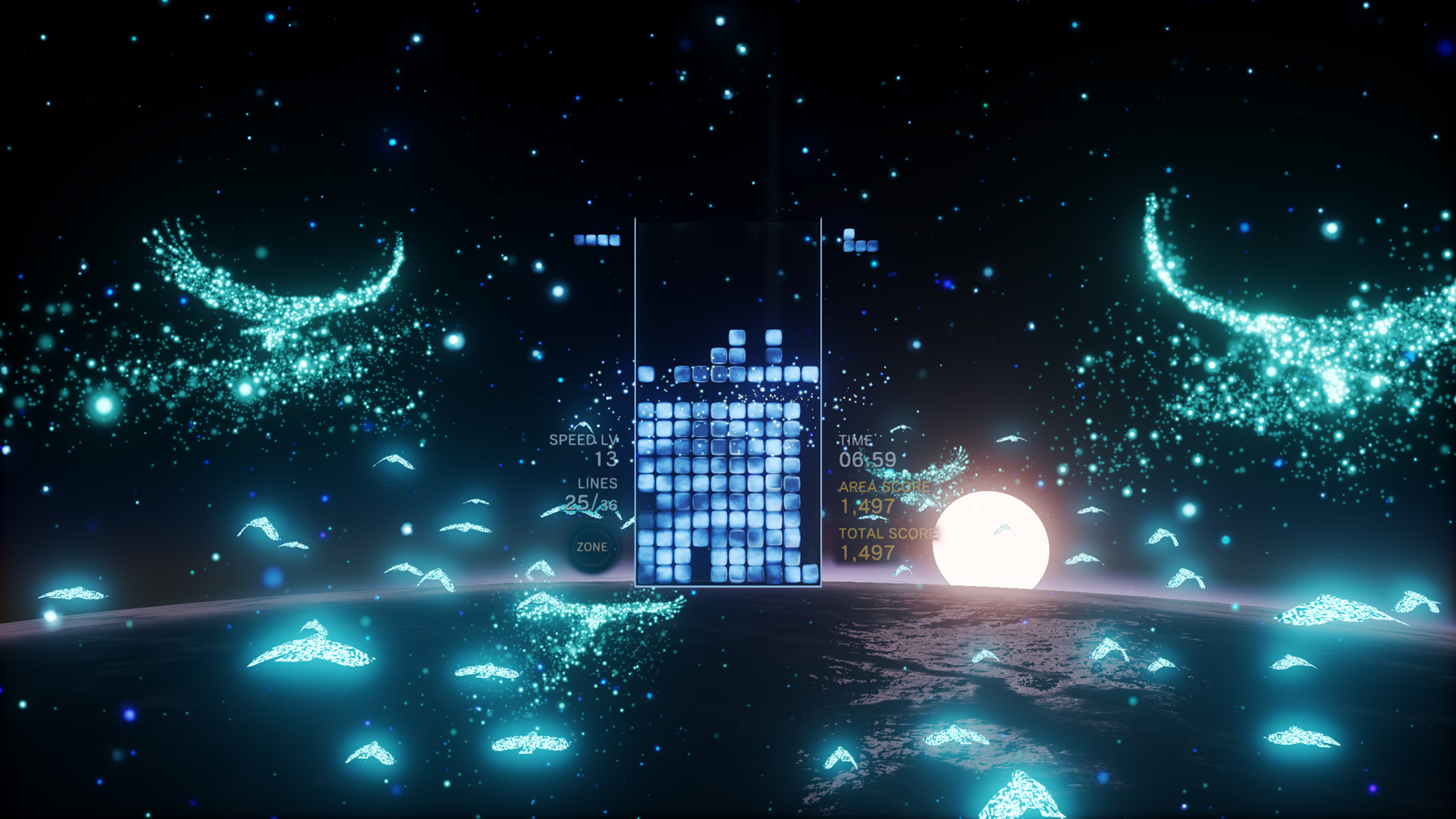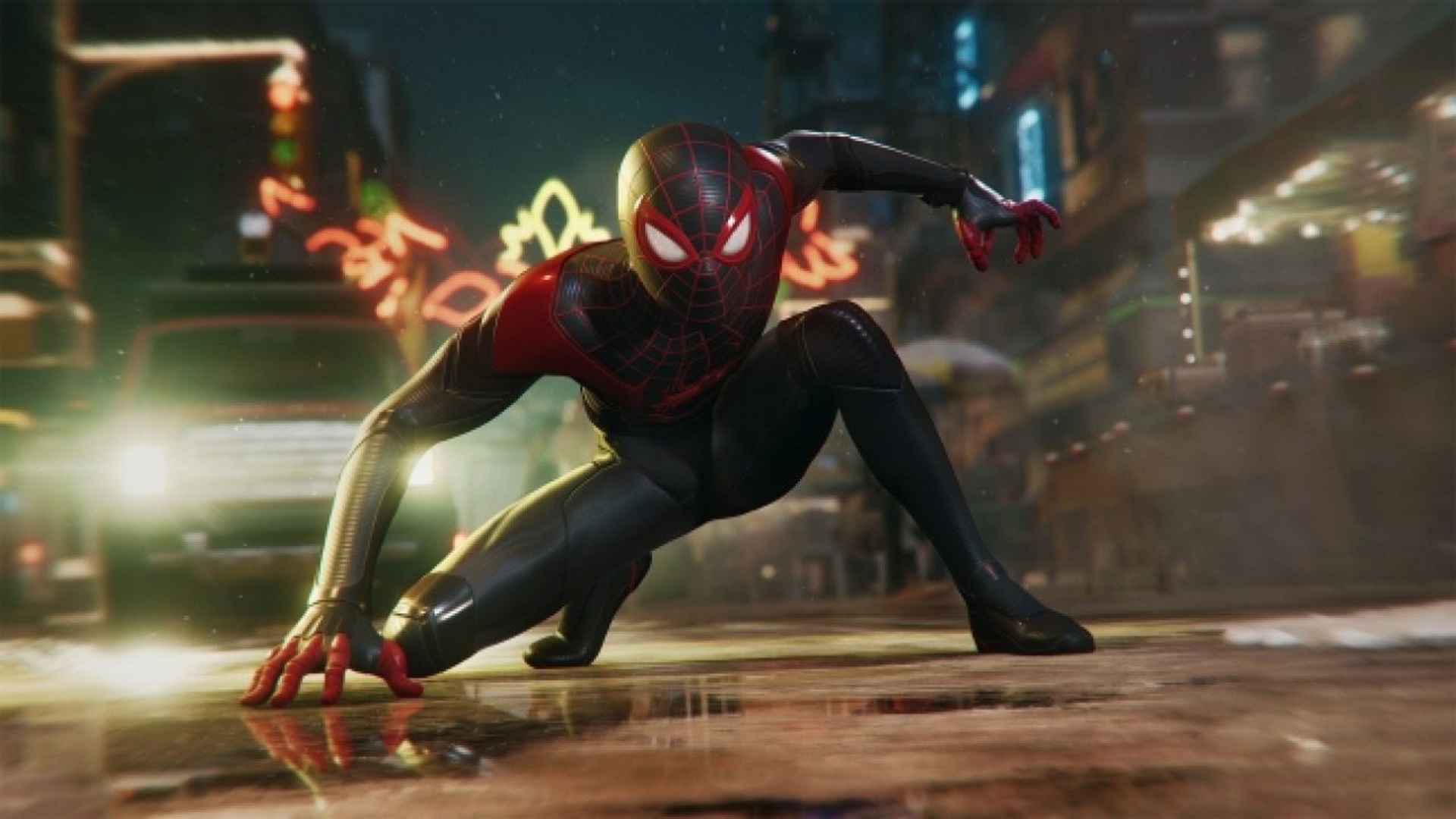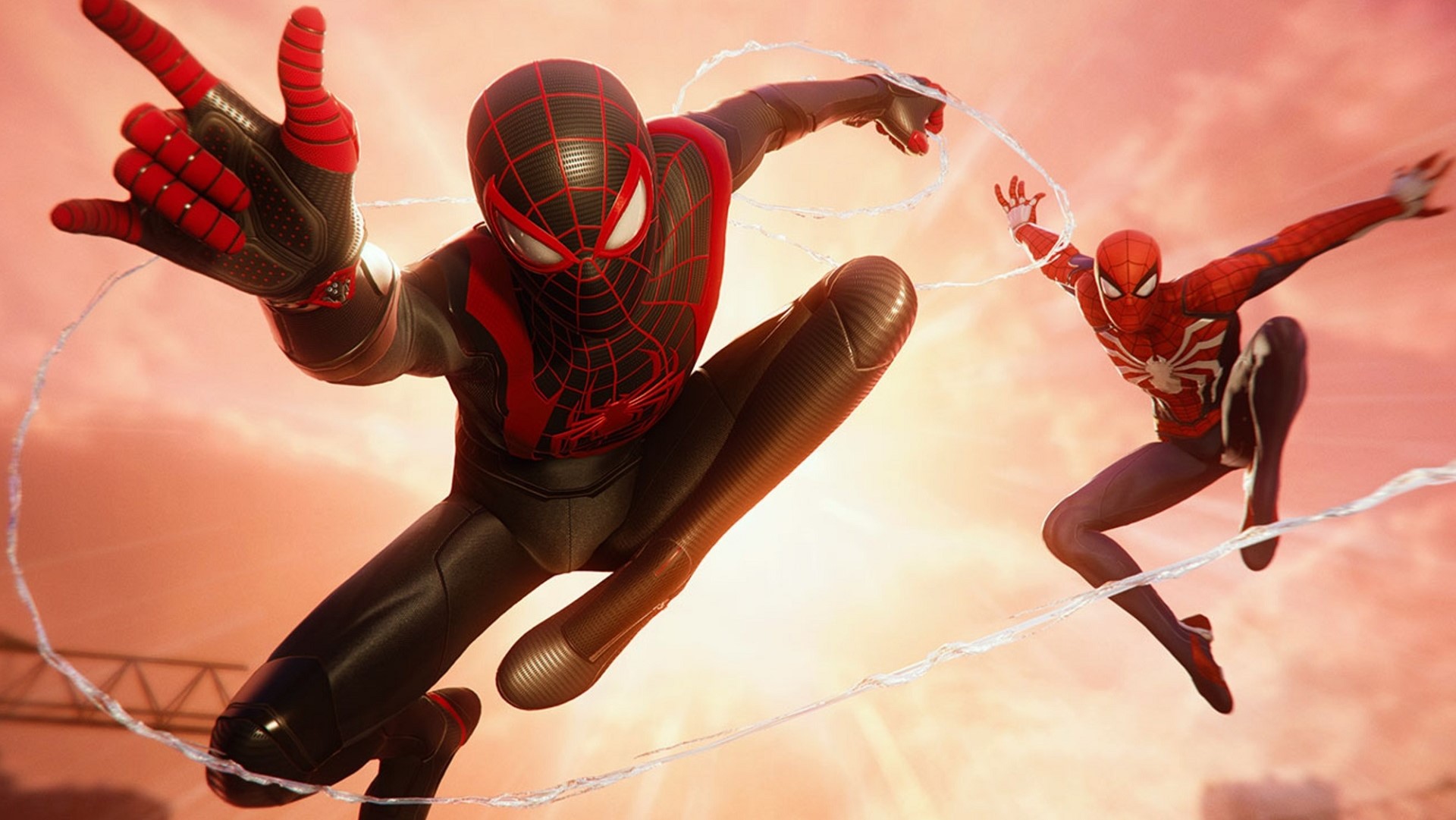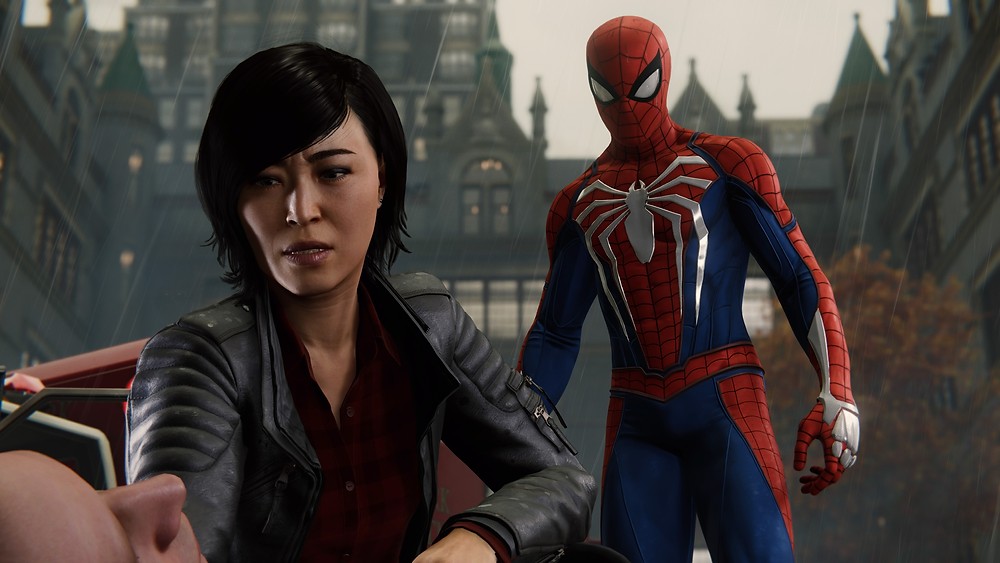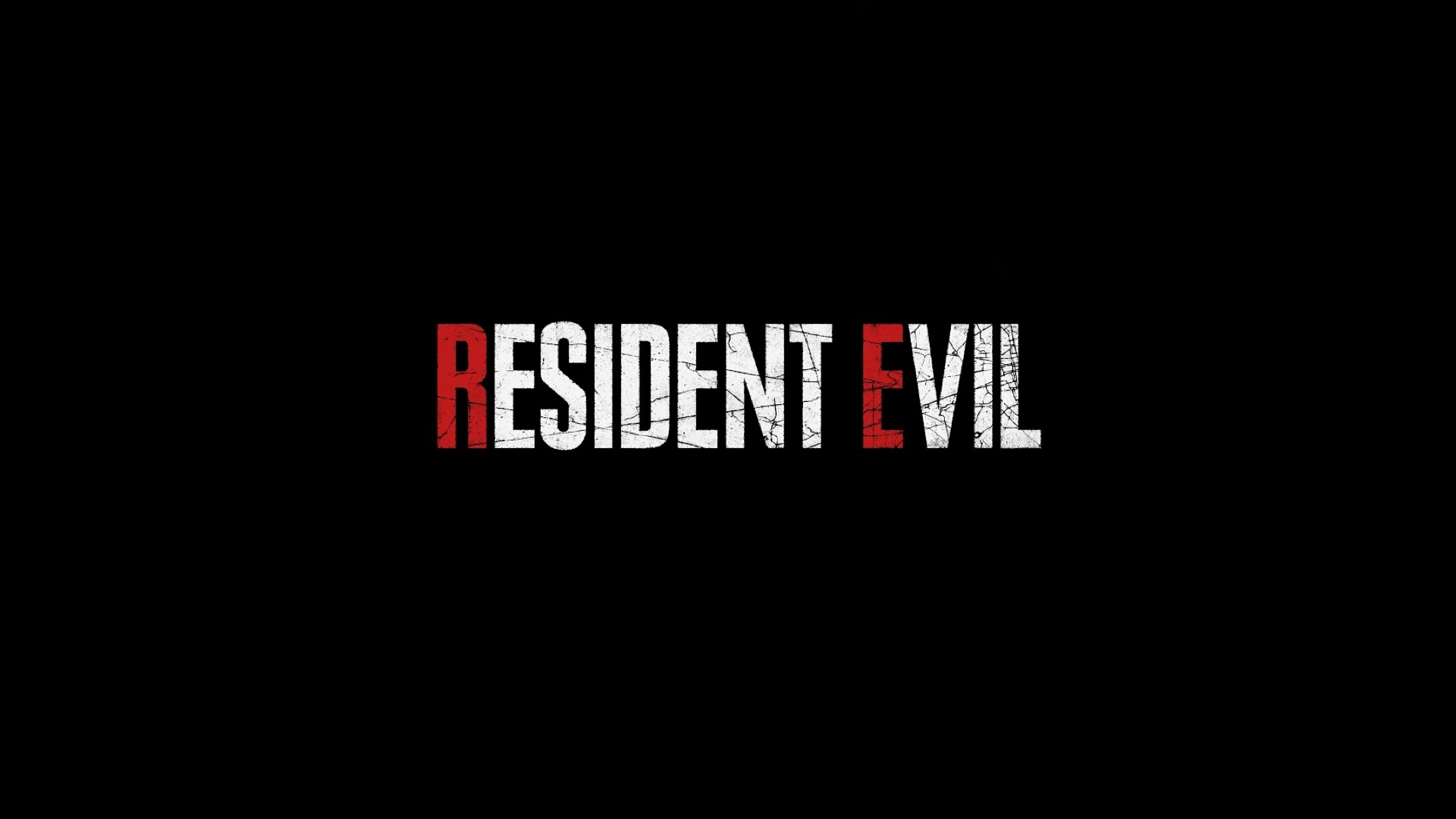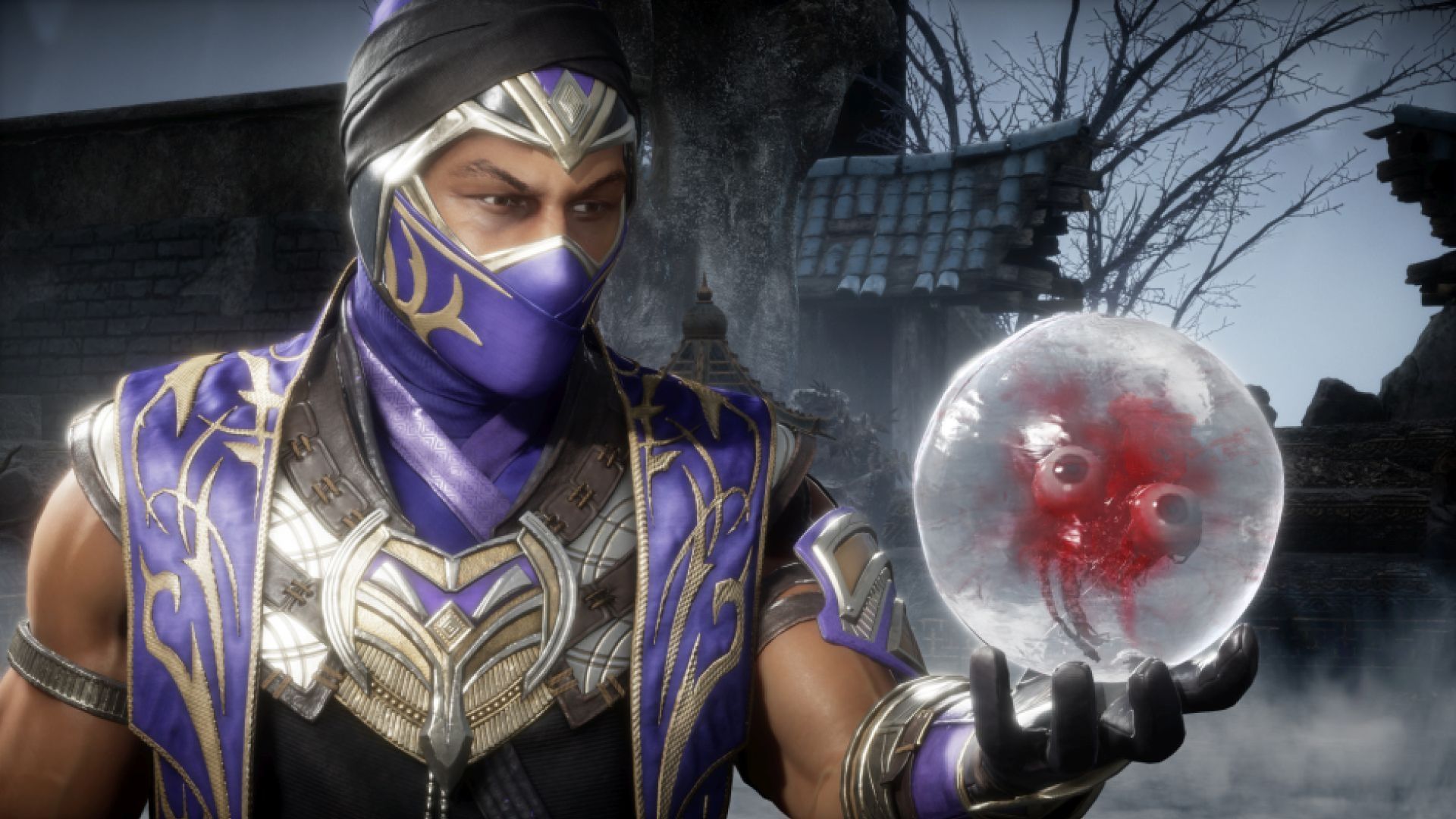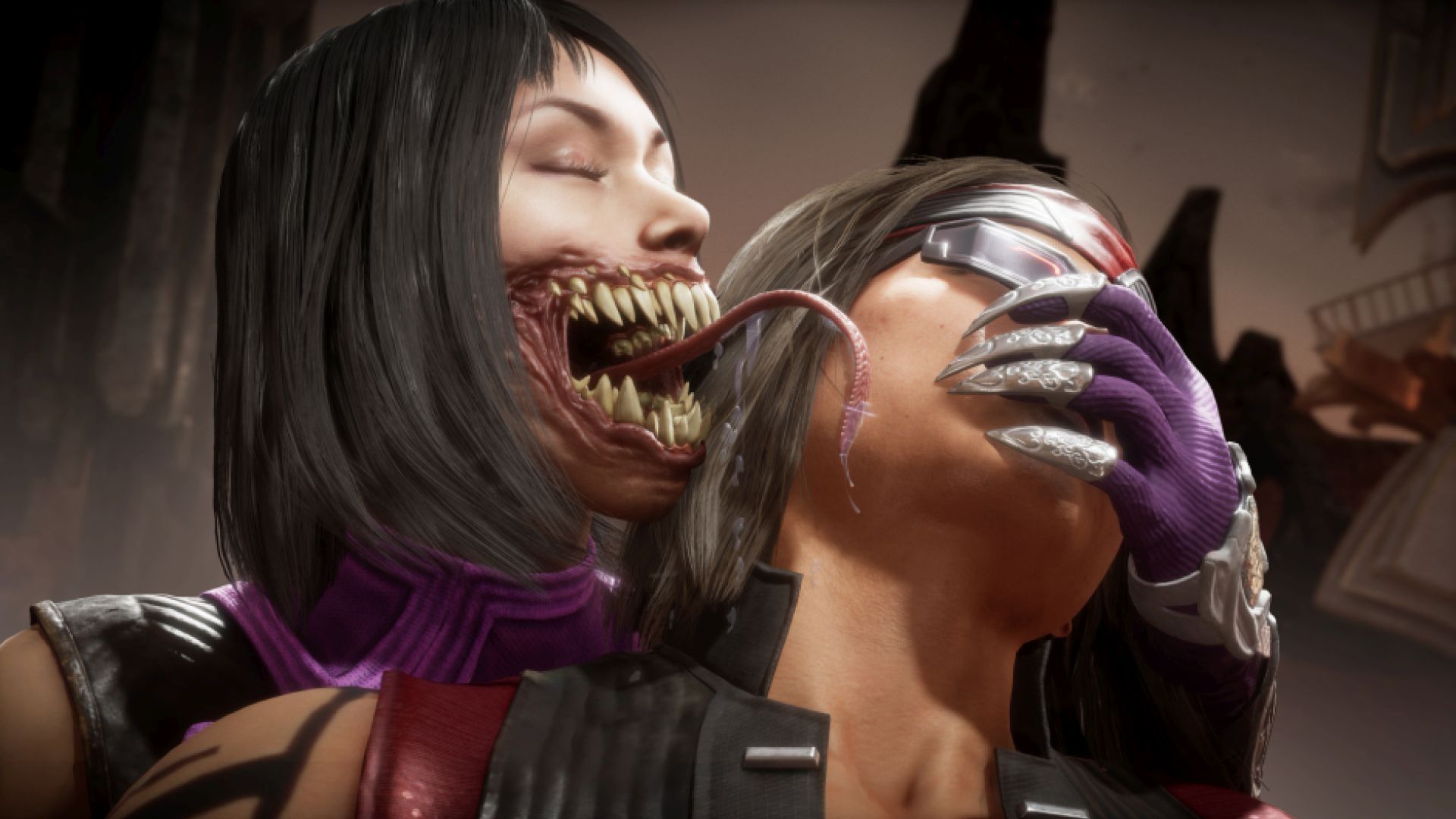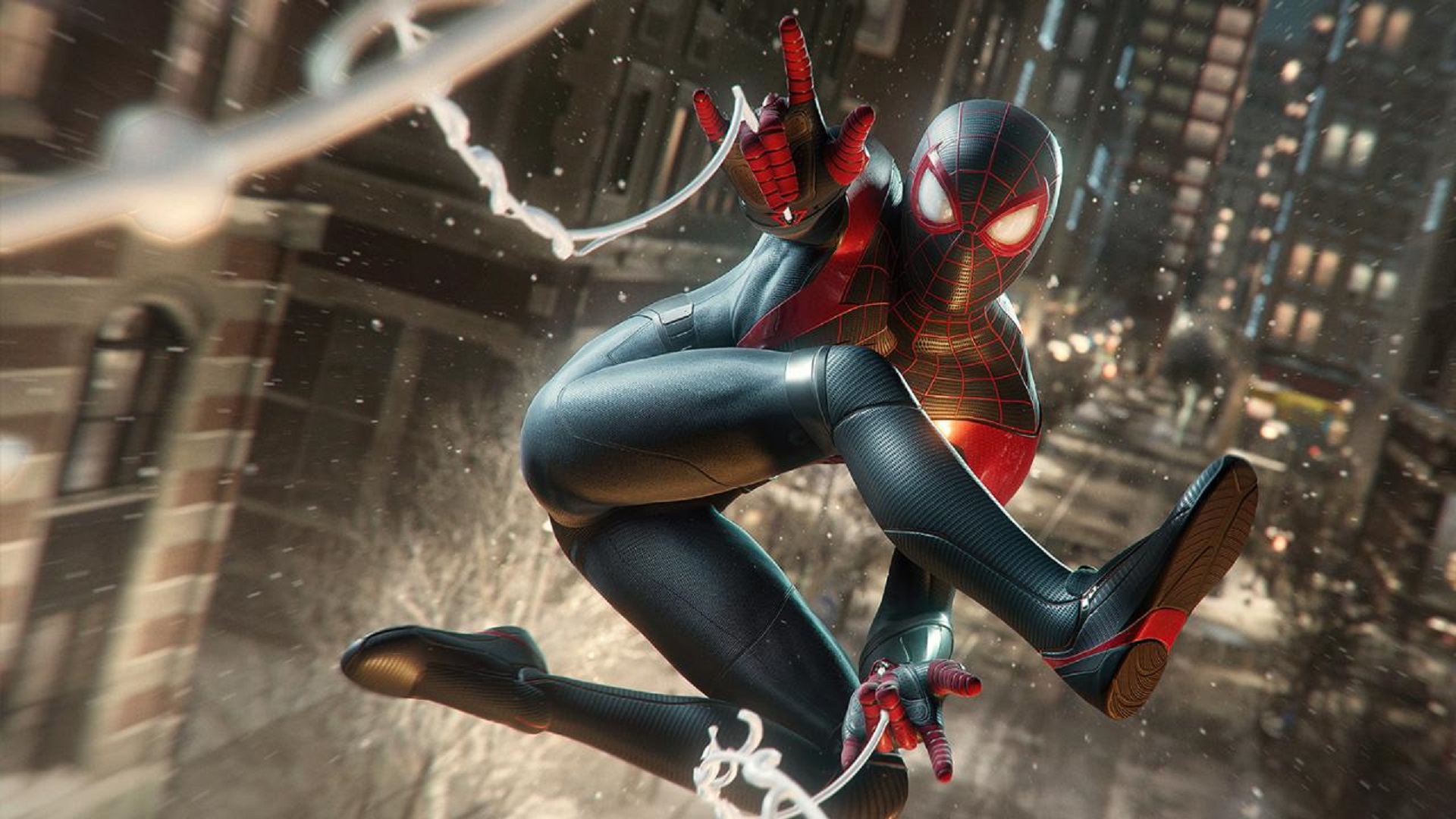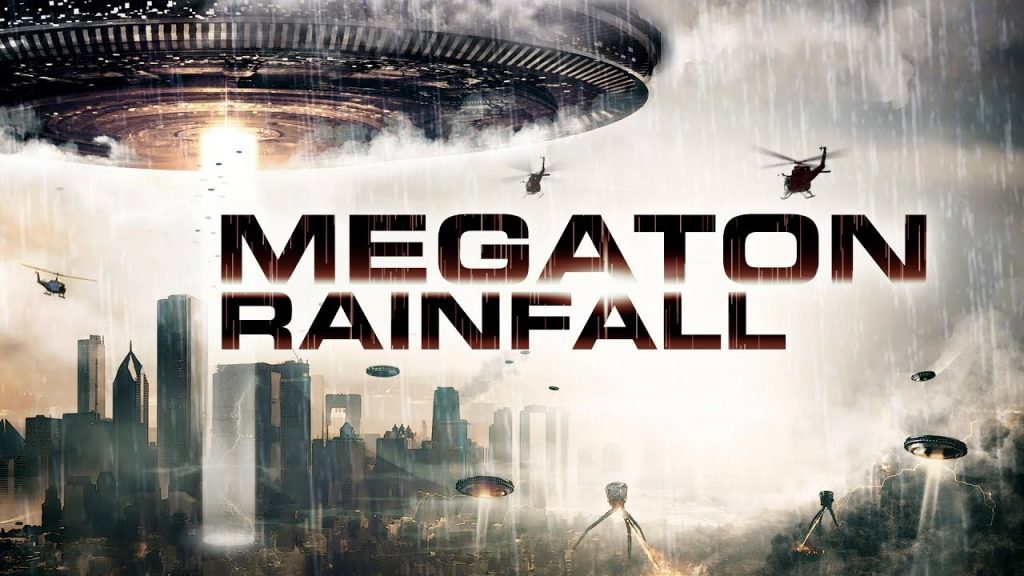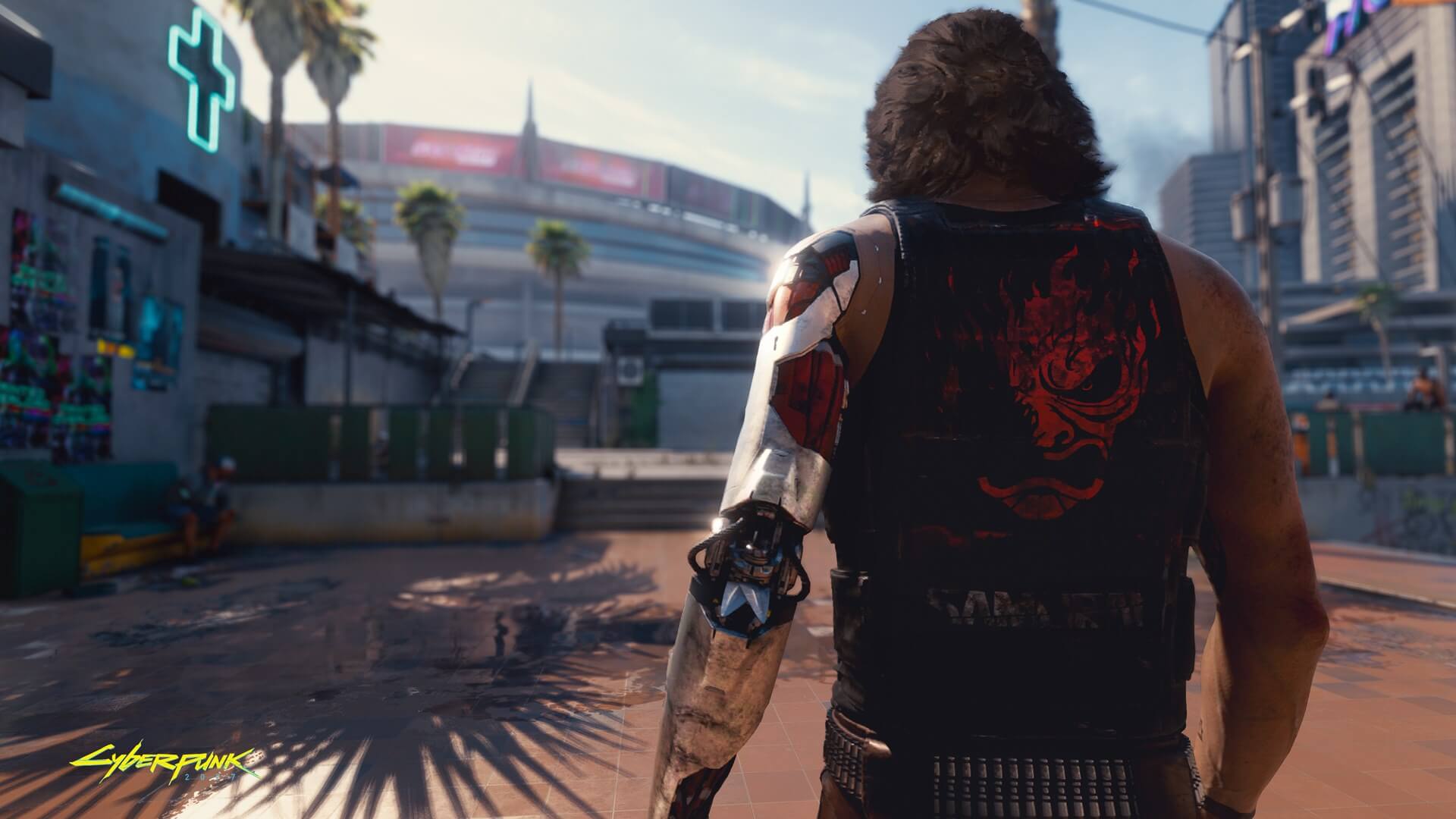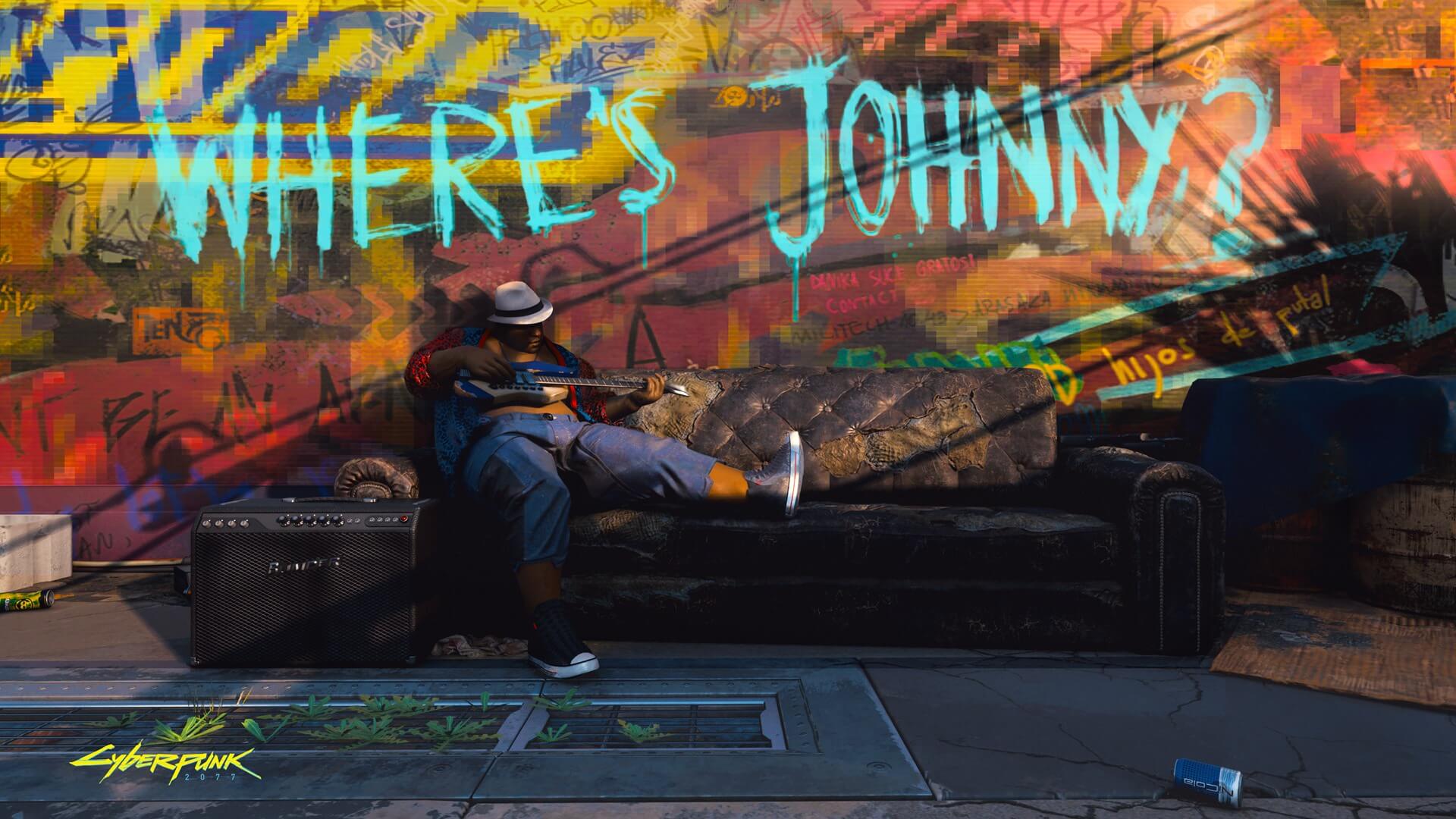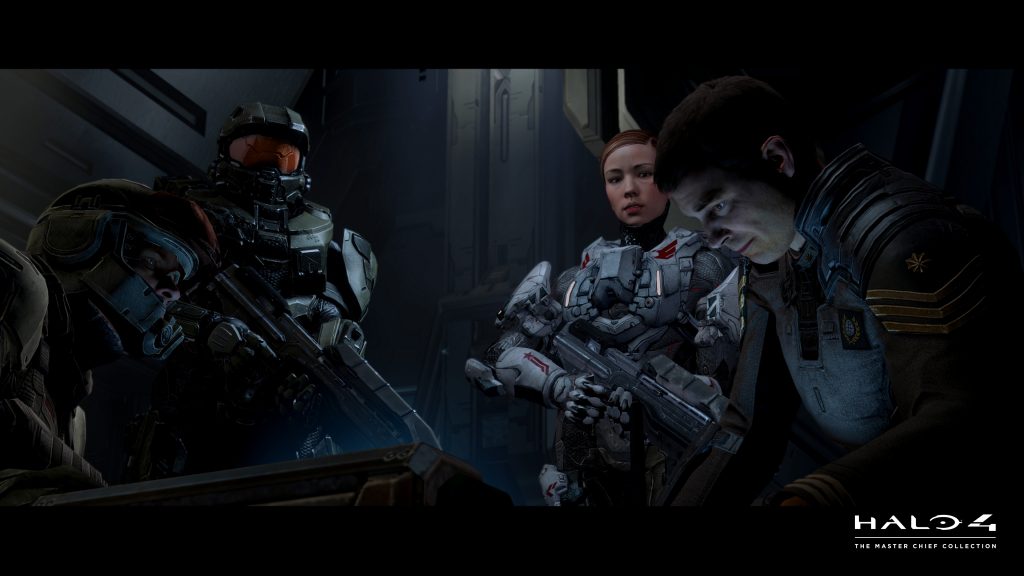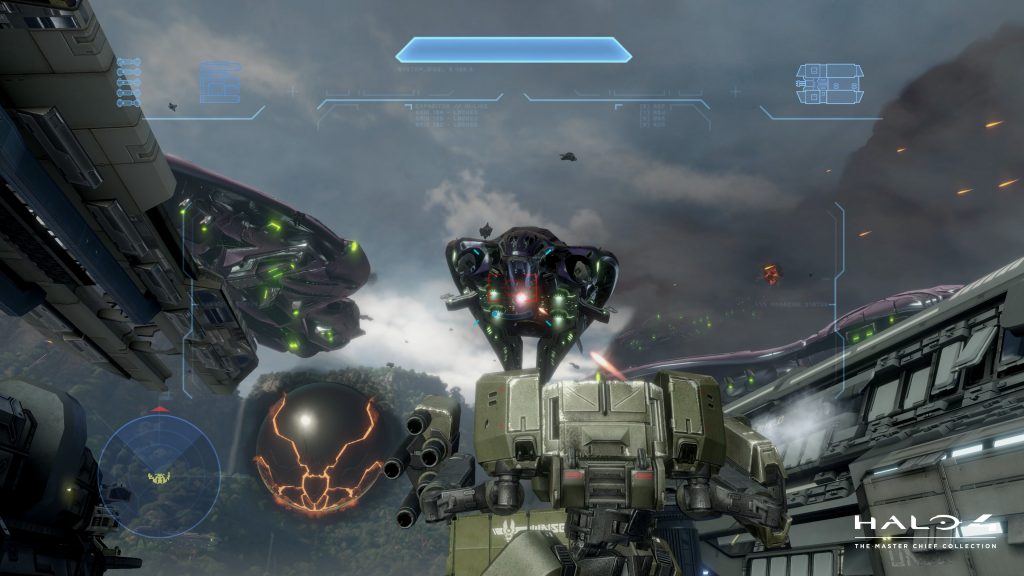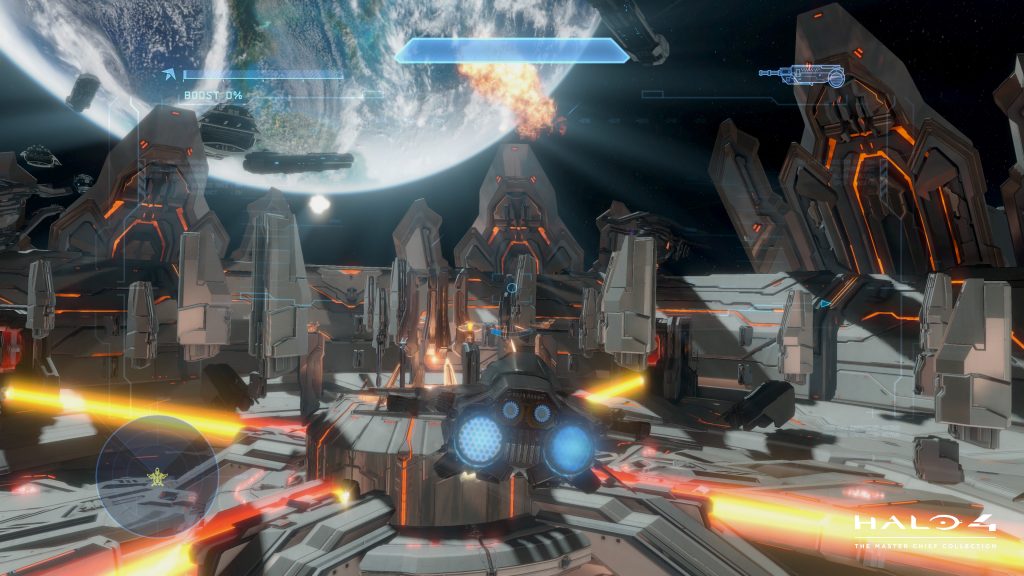Tetris Effect Creator Says He's Working On Next Project
It was last year when we were kind of taken off guard by the release of Tetris Effect. The game fused classic Tetris play with sensational sound and visuals for an unforgettable experience. The game recently found its way to the Xbox console family with a new multiplayer mode in tow, which we were pretty big fans of. Now it seems the man behind it is already working on his next project.
Tetsuya Mizuguchi took to his official Twitter to confirm he had moved to his next adventure. Besides Tetris Effect, Mizuguchi was also behind Rez and Child of Eden, two original IPs with a similar feel to them. This next game will also play with the concept of synesthesia, which is all about mixing together different sensations like sight and sound for unique experiences. The Enhance studio is working on another game called Humanity that was announced last year, but it doesn't seem as if that project is related to Mizuguchi's next.
Tetris Effect: Connected is available now on Xbox Series X/S, Xbox One and PC. The base game without the Connected multiplayer content is also available on PS4 with that material planned to come there at some point in the future.
Yup. Today is Rez's anniversary
Was released on Nov 22, 2001.
Thanks to everyone who played Rez, Child of Eden and Rez Infinite. I and @enhance_exp is moving forward to the new project – totally new adventure with synesthesia.
Thanks for the cool GIF @turfmasta
https://t.co/Jby5GUcOK0
— Tetsuya Mizuguchi (@Mizuguchitter) November 22, 2020
How Marvel's Spider-Man: Miles Morales' Ending Sets Up Spider-Man 2
Marvel's Spider-Man: Miles Morales is out and by now, many would have finished the main story. It's not a super-long campaign but still immensely enjoyable with stellar production values and side content to indulge in. While it's not a "true" sequel, acting as more of an interlude between its predecessor and the inevitable Spider-Man 2, Miles' heroic journey concludes in a number of interesting ways.
Before we get into the ending, please note that there will be spoilers for pretty much everything. If you're still playing the story and want to experience it for yourself – which you most definitely should – then turn back now.
As noted before release, the story sees energy corporation Roxxon investing in the new Roxxon Plaza for Harlem where Miles and his loved ones live. Powered by Nuform, the company eventually comes into conflict with the Underground, a high-tech outfit looking to expose the energy's danger. Leading the group is The Tinkerer, who turns out to be Phin Mason, one of Miles' best friends. Phin is ultimately looking to sabotage and destroy Roxxon Plaza but the company's R&D director Simon Krieger anticipates her plan, rigging it to destroy Harlem if that happens. Along the way, Miles encounters his uncle Aaron Davis, who previously worked at Roxxon and is now The Prowler. Though Davis's goal was to protect Miles, he eventually concedes to his desire to help others and even helps Harlem's citizens to evacuate before things go south.
As Roxxon and the Underground battle, Miles battles The Tinkerer/Phin. Though he eventually wins, the plaza's reactor has gone critical, leading to Miles absorbing the energy. Phin then flies with Miles above the city so he can release the energy but stays with him till the end and dies in the process. Miles survives, with a few of Harlem's residents keeping his identity secret; Krieger is arrested after Davis turns himself in; and Peter Parker, who traveled to Symkaria, returns and the duo resume their crime-fighting duties.
Mid-way through the credits, however, we switch to the POV of Harry Osborn in a containment tank. Norman Osborn walks in and speaks to Dr. Curt Connors about releasing Harry, though Connors warns about the potential dangers of…well, you know what. The Symbiote doesn't react as much as it did in the post-credits scene for Spider-Man. But the conclusion is clear – Venom will be entering the fray soon.
But there could be more to the sequel's story than that. It's first important to understand that in one Marvel Comics universe, Earth-12041, Harry Osborn bonded with the Symbiote, first becoming the Black Suit Spider-Man and then turning into Venom. This universe is the designation used for the Ultimate Spider-Man animated series and comic books (which have separate stories). The animated series is interesting due to the number of parallels you could draw with Insomniac's first Spider-Man, like Doctor Octopus taking revenge against Norman Osborn (though the reasons are different and in the series, the Doc was responsible for turning Osborn into the Green Goblin).
In this universe, Harry opposed Spider-Man as Venom and despite being freed, it would re-emerge several times throughout the series (at one point, he even became Anti-Venom). Interestingly, when Venom re-emerged a second time, it was while Harry was asleep. Over the course of the series, he would harbor an intense hatred for Peter, driven primarily by his father being more interested in Spider-Man than him.
So from the outset, Harry becoming Venom and being playable in Insomniac's Spider-Man 2 is very much possible. In fact, he could have his own separate campaign or missions, acting as a deuteragonist to Peter Parker. However, unlike the animated series, Norman Osborn seems more driven by love for Harry and saving his life as opposed to simply harnessing the power of the Symbiote. Of course, given how things play out, there's also a possibility that Norman could become the main villain, either through his own experiments or from extenuating circumstances.
It could be akin to the 2002 Spider-Man film where, to obtain an important contract, Norman experiments on himself and becomes the Green Goblin. How the dynamic works here will be key – because Norman expressed nothing but disappointment in Harry, even when he became Venom in the animated series. Meanwhile, the Symbiote seems more than happy to kill Osborn, either as a direct result of Harry's anger or because, well, it's the Symbiote.
How Miles factors into all of this is the real question. Marvel's Spider-Man 2 presents the opportunity to introduce some kind of co-op element, perhaps even a separate mode like Ghost of Tsushima: Legends that has its own story-line. There's no denying the appeal of swinging through the city with multiple Spider-Men or even jumping into a friend's session for some crime-fighting in the campaign. But the focus of Sony's flagship console titles is to offer a compelling single-player experience first. Having Miles as a co-op character would still be possible but then having Venom as a playable character would mar the pacing.
Another possibility is that Peter Parker as Spider-Man and Venom tussle throughout the campaign, leading to some kind of showdown with Norman Osborn as the Green Goblin. The story could end with Harry going his own way and possibly starring in the DLC, perhaps in a set of stories akin to The City That Never Sleeps. Perhaps he'll transition into more of an anti-hero role, as Venom has usually been recognized for throughout the years.
A quick note on other characters – Aaron Davis returning as the Prowler seems unlikely since he went to prison at the end of Marvel's Spider-Man: Miles Morales. A reduced sentence, sure, but unless Spider-Man 2 is set a year or two after, it would be a stretch to see him again. Yuri Watanabe could definitely make an appearance as Wraith, especially after her actions in The City That Never Sleeps. But it's unlikely she has more than a dedicated arc or a few appearances due to the number of other pressing storylines that could unfold in the sequel.
One thing's for sure – Simon Krieger making a comeback is almost impossible. While he goes to jail, likely for a long time due to Roxxon's actions, his character was eventually killed off in the comics. So even if he survives in the video game's universe and is perhaps referenced in the sequel, having a direct impact on the plot is highly unlikely.
Marvel's Spider-Man 2 will likely release by 2022 with Insomniac currently focusing its resources on Ratchet and Clank: Rift Apart (which launches in the first half of 2021). There's no doubt that development has already begun but how will Manhattan change? Will we explore more of New York City? Time will tell but there's certainly a lot to potentially look forward to.
The Medium is 8-10 Hours Long, "About 33%" of the Game Has Dual Reality Gameplay
Bloober Team's The Medium is shaping up to be their most ambitious game to date, and the central hook that's going to set the game apart from others in the genre and from Bloober's own past efforts is its dual reality gameplay, which will see players navigating the spirit world and the real world simultaneously at certain points in the game.
We recently had the chance to shoot some of our questions about the game at the developer, and we learned quite a bit about the upcoming horror title in the process. One of the things that producer Jacek Zieba told us was that The Medium will be about 8-10 hours long, which to me seems like the perfect length for a horror title.
When quizzed about the dual reality mechanic and how it will function in the game, Zieba told us that it is used as much for storytelling purposes as it is for gameplay, and that about 33% of the game will make use of the mechanic- which means it won't be a constant, dynamic thing that players will be able to use whenever they want.
"The main belief of the game is duality and providing different points of view, starting from story to gameplay ending, which is why dual reality gameplay is one of the foundations of The Medium," Zieba told GamingBolt. "The game does not appear with dual reality gameplay all the time as players can expect to play in it about 33% of the game, while the rest of the game takes place within a single reality, either in the real world or in the spiritual world."
"This is to constantly surprise players in which world they are currently in, and it also aims to pose new challenges – how can players use the world to their advantage?" he added. "At some points in the game, the player will be able to move from the real world to the spiritual world in specifically designated places. It will not be possible to switch between worlds at any time in the game since the whole game is designed in that new gameplay mechanics can be discovered within their own realities as well as with each other during dual reality gameplay."
Zieba went on to explain that showcasing two realities simultaneously is Bloober Team's "primary philosophy designed to further enhance the story", but that it will come into play on the gameplay and atmosphere front as well. "The dual reality mechanic also promotes gameplay and exploration, as well as taking in the atmosphere itself," he said. "In one world, we can be in a seemingly safe location, but players will be in two worlds at once, so we never really know if something is lurking in the other reality."
In the same interview, Zieba also spoke to us about how the likes of Silent Hill and Resident Evil served as inspirations for The Medium's development team in terms of things such as atmosphere and fixed camera angles, with the latter being a first in a Bloober-developed horror title. Read more on that through here.
The Medium launches for the Xbox Series X/S and PC on January 28, 2021. A PS5 version is not currently planned.
Resident Evil Outbreak Game In Capcom Data Leak Is Revelations 3 – Rumor
It's been quite the couple of weeks for Capcom. A massive data leak has come that potentially reveals a huge slate of their games that are being worked on for the next few years, and a lot of employee data could also be at risk. It's far beyond the usual leak, and people have been combing through the various different things. One thing that stuck out was a listing for Resident Evil Outbreak, making many people wonder if a remake or new entry was on the horizon. Well, one of the Capcom insiders has weighed in.
If you aren't familiar, the Outbreak subseries of the franchise was a pair of titles released on the PS2. While they could be played solo, they were meant for multiplayer as you and a group of other players navigated through several areas during the Raccoon City incident. Dusk Golem, a Capcom insider who 'retired' earlier this year has seemingly returned to clarify some aspects of the leak. When asked about the Outbreak leak, he said that was actually Revelations 3.
The Revelations games were yet another subseries, but one that tied in more directly to the mainline story. The first game took place in-between RE4 and 5 with the second one taking place between 5 and 6 and starred some of the main characters of the franchise who had not been used for awhile mixed in with some new faces.
As you can see below, Dusk Golem doesn't offer any details beyond this. So it's unclear if he's staying that the Outbreak aspect is just a codename or if Revelations 3 will in some way tie in with the older Outbreak titles in some form. Of course, even though Golem has a generally solid track record with these leaks, we also have to take it all with a grain of salt. As of now, the focus is on Resident Evil Village, which is looking likely to launch around April of next year. We probably won't know anything about the game being discussed here until at least then.
It's Revelations 3, not Outbreak 3. I won't say more than that for now though. https://t.co/Yl6peklnbX
— AestheticGamer aka Dusk Golem (@AestheticGamer1) November 23, 2020
Is Mortal Kombat 11: Ultimate Worth It?
The Mortal Kombat series is one of the most renowned franchises in all of gaming's history, and 2019's Mortal Kombat 11 took the franchise to a new level with a host of new characters, technical upgrades, and gameplay mechanics. As is common for NetherRealm Studios, the developer wants to make its most recent game set the bar for what fighting games can be, especially as the industry sees the release of a new generation of consoles. With that, Mortal Kombat 11 Ultimate is the best and most complete package to experience what Mortal Kombat 11 has to offer. It doesn't add anything new that isn't available separately, but its visual upgrades and improved loading times make it the most impressive fighting game experience currently available on the next generation consoles, though the original game's issues remain heavily unaddressed.
At its foundation, Mortal Kombat 11 Ultimate is effectively a remastered complete edition of MK11, including every piece of content separately released for the game to this point. It's primarily intended for next-generation consoles, and it luckily allows for a free upgrade from previous generations to the Xbox Series X or PlayStation 5. Included within Ultimate are the base game, the Aftermath add-on, and the two Kombat Packs, the latter of which was released alongside Ultimate. This second Kombat Pack is available separately to those who own the base game, and it includes three new playable characters.
"Mortal Kombat 11 Ultimate is the best and most complete package to experience what Mortal Kombat 11 has to offer."
The most notable of these three is John Rambo, animated to replicate his movie appearances and fully voiced by the character's actor Sylvester Stallone. Rambo's move set is generally what you would expect given his signature movie persona, as his attacks heavily utilize his weapons, especially his rifle, grenades, and crossbow. His appearance is more style than substance, though, because, like the inclusions of Robocop and the Terminator, much of what he has to offer pays homage to the movies more significantly than it offers a truly unique playable character. There is definitely fun to be had with Rambo, but it's often more about the who than the what.
The other two characters, Mileena and Rain, return from past Mortal Kombat games and are more familiar in their move sets. Both have new abilities to adapt to the story and the new mechanics for all characters, but those familiar with these characters in past games will be able to hop into playing with them now easily. I found Rain to be have a more interesting and diverse set of attacks and animations, especially given that he has made fewer appearances in the series in recent iterations, but both characters are good additions that add unique characteristics to the game and the lore.
When it comes to the benefits that Ultimate provides over other versions of the game, the technical improvements are surely the most significant and noticeable, especially when playing on a next-generation console. It is instantly noticeable how much crisper the visuals can be when put to full 4K on an Xbox Series X. Character models are as impressive as they've ever been in the series, as is exemplified by the photo mode that allows you to examine every character in excruciating detail, and environments in the background of each stage have better lighting, more going on, and are altogether more impressive when you pick everything out.
"It is instantly noticeable how much crisper the visuals can be when put to full 4K on an Xbox Series X."
Stages already run the gamut from bright arenas under the sun to dark lairs lit only by fire pits, and the improved visuals make these differences more tangible in the way the lighting bounces off of the rest of the environment and the characters. Animations, too, are more fluid and snappier, aided by the better visuals and more consistent 60 frames per second. Mortal Kombat has always been known for having fast-paced gameplay that hinges on instantaneous reactions, and the improved reaction times within the game make this easier to accomplish on the player's end.
The more consistently noticeable technical improvement for Ultimate is the significantly improved load times, which are reduced to just a handful of seconds on the Xbox Series X for virtually any load throughout the game. When booting up a quick play local match, load times begin to approach zero, which is both incredibly impressive and highly convenient, especially because over the course of even just a few hours of play, this starts to save an increasingly noticeable amount of time. In other modes, too, time between matches usually occurs as a result of other inclusions, such as cutscenes or tutorials, rather than due to a static loading screen. Even in the story mode, the transitions between fights and cutscenes are more seamless than ever, which makes it a lot more engaging to not have to accommodate a clunky transition.
The story mode has its own set of improvements throughout Ultimate, though it, too, is unchanged in most ways from its original incarnation. The Xbox Series X version downloads an entirely separate DLC pack specifically made to improve the story's graphics to a native 4K, and the story is better for it. The improved graphics, alongside the much-improved loading times, make the cutscenes significantly better to explore, more so than the visuals within the gameplay itself. Character models are even more improved in cutscenes, and action between them, which occurs often, is more impressively animated.
"The more consistently noticeable technical improvement for Ultimate is the significantly improved load times, which are reduced to just a handful of seconds on the Xbox Series X for virtually any load throughout the game."
The story mode in Ultimate comes packaged with the Aftermath DLC, which contains five additional chapters that take place after the events of the main campaign, and the story takes around 8 hours to complete in total. Altogether, the story is still as hit or miss as it has always been, and the interactions between characters still feel somewhat contrived to force a one-on-one fight. However, the story is as fun and interesting to experience as ever, regardless of your suspension of disbelief for the plot, because it has the best visuals, most seamless load times, and most consistent gameplay of any iteration of MK11.
Other modes are similarly improved by a rising tide of graphics and load times but otherwise untouched in Ultimate, failing to address many of the lingering issues with the game. The Towers have had few changes in their structure and still serve as a generally better way to play a structured and increasingly difficult mode. The Krypt certainly runs better with more power under its belt, though it is still a questionable mode that generally doesn't provide much payoff for the sizeable amount of work needed to open all of its areas. The gear system, too, is virtually unchanged and is still as unnecessarily grindy as ever.
Regardless, Mortal Kombat 11 still provides some of the best and most fun fighting gameplay any game in the genre has offered in a long time. Its pure fighting gameplay is the best the series has ever had, and it complements it with a slew of in-fight extras. One of the franchise's signature controversies, its gore, is even further improved in Ultimate. Attacks go into the x-ray vision regularly within fights, instead of just within fatalities or brutalities. Environmental attacks, which are even more prevalent, and the new Fatal Blow system both commonly pause the fight to show someone's head being smashed or spine being torn out, and the unfettered visuals allow these and the ever-brutal fatalities to be as graphic as ever. If you're squeamish, this series has never been for you, and Ultimate only emphasizes its central themes.
"If you're squeamish, this series has never been for you, and Ultimate only emphasizes its central themes."
Mortal Kombat 11 Ultimate is, on its surface, a compilation of everything available for MK11 with a few new upgrades and additions. New and improved graphics and slashed loading times let anyone who enjoys the series have the best experience currently possible on consoles, but it doesn't address or fix many of the primary problems in the original's mechanics. MK11 Ultimate doubles down on every aspect of the original and brings every piece of content together for a more complete and overall improved experience, but don't expect a transformation into an entirely new package.
Marvel's Spider-Man: Miles Morales Lacks The Chrysler Building Due To Copyright Issues
Marvel's Spider-Man: Miles Morales launched earlier this month alongside the PS5, and it was a solid follow up to the 2018 take on the iconic webslinger. It takes place in New York, as most Spider-Man related media does, but those with a keen eye may have noticed that one big building was missing. No, I'm not talking about the Baxter Building, I'm talking about the Chrysler Building. However, it was no mistake, it was all due to rights issues.
In a Game Informer interview with James Stevenson, the Community Director for Insomniac Games, he confirmed that the building was not included due to copyright problems. There was a change in ownership in 2019, which voided the previous agreement they had to portray the build. He didn't get into specifics, but did say there were negotiations between them and the current owners, but it was not to be.
"When creating our representation of the city we wanted to include as many landmarks as we could to add to the sense of immersion. Sometimes negotiations to use those locations didn't work out, which was the case with the Chrysler Building in Marvel's Spider-Man: Miles Morales."
It may seem strange, but it's actually not that uncommon. The iconic Hollywood Sign, for instance, has similar issues with being portrayed in media. Well, either way, with or without the Chrysler, Marvel's Spider-Man: Miles Morales is available now on PlayStation 5 and PlayStation 4.
Top 15 Superhero Games of the 8th Console Generation
Superhero games used to have a history of being inconsistent, and for every great superhero game we got, we also used to get several others that were largely forgettable. 2009's Batman: Arkham Asylum, however, was the beginning of a new chapter, and especially in the 8th console generation, the genre has delivered a number of great games at a steady clip. In this feature, we're going to rank what we feel have been the 15 best superhero games of the PS4 and Xbox One era.
#15. MEGATON RAINFALL
The very definition of the phrase diamond in the rough, Pentadimensional Games's 2017 first person action title Megaton Rainfall is a game that is great in spite of itself. Its rough around the edges in more ways than one, but it captures the power fantasy that every superhero game should deliver almost perfectly with its vast setting and its stylish combat.
Top 15 Third Person Shooters of the 8th Console Generation
The 8th console generation is almost at its end- at the very least, it's no longer the "current" console generation. And like many other genres, third person shooters have had a good last 6 or 7 years, having seen the releases of several great games that will be remembered as genre highlights for years to come. In this feature, we're going to tank what we feel are the fifteen best third person shooters of the PS4 and Xbox One era.
We do want to make one crucial note before we begin though- our primary consideration while formulating and ranking this list hasn't been to judge these games as complete experiences, but rather to focus primarily on their shooting mechanics, and their strengths as third person shooters. If you see games in this list that you think are ranked too low or too high (which will probably happen), keep that crucial factor in mind.
#15. GHOST RECON WILDLANDS
Ubisoft brought Ghost Recon back after a brief hiatus in 2017 with Ghost Recon Wildlands, turning the series into a full-fledged open world shooter, and while there was much about the game that set it apart from its predecessors, in one specific area, it proudly continued past traditions- as a shooter, Wildlands is top notch. Going up against scores of bad guys in the game always feels enjoyable and rewarding thanks to the tight shooting mechanics and the game's systemic nature, all of which combines nicely with the solid co-op gameplay on offer.
Cyberpunk 2077 Lore – Who is Johnny Silverhand?
We know him as John Wick, and soon, we'll know Keanu Reeves as Johnny Silverhand as well. But while we're all excited to see the beloved actor take on a major role in CD Projekt RED's upcoming open world RPG opus Cyberpunk 2077, that's far from the only reason we're curious to see what role Johnny Silverhand will play in the game's story. In the deep, rich lore of the Cyberpunk universe, Johnny Silverhand has been a magnetic and fascinating character for some time, and many of this property's greatest stories have centered around him and his actions.
To see him play such a major role in Cyberpunk 2077 spells exciting things about the game- but for those not in the know, who exactly is he? What's Johnny's deal? Well, that's exactly what we're here to talk to you about, and hopefully, by the time we're done, you'll have a much better understanding of events that have transpired in his past to get him to where he's going to be in the upcoming (hopefully) soon to be released game.
Though he's known and loved across the world in the Cyberpunk universe as Johnny Silverhand, the rebellious musician wasn't born with that name. Born in 1988 as Robert John Under, he had a tumultuous and eventful life in his earlier years as well. He enlisted in the United States military at a rather young age, and not long afterward, saw action in the field in the conflict that went on to be known as the Second Central American War.
It was a conflict that garnered some particularly ugly press, as conflicts obviously do. The United States military's reasons for engaging in hostilities with various Central American nations were considered dubious by many, and the war itself was deemed unnecessary by a large number of people- which included many in the US military itself. That large number of people included Johnny himself, and like several other American soldiers, rather than fighting in a conflict he did not believe in, he chose to desert the military, even if that meant risking his own life.
Johnny returned to Night City, the place where he was born and lived before he had enlisted, and changed his name, adopting a new persona to keep his real identity a secret, so as to make sure that his desertion from the army was kept a secret from people that mattered. He began calling himself Johnny Silverhand, deriving his last name from the cybernetic arm he had to have installed to replace the one he'd lost in the conflict in Central America.
Not long afterward, Johnny Silverhand shot to fame- he chose to embody his rebellious nature and his anti-corporation and anti-government spirit through his music. His band, Samurai, was widely and fiercely beloved across the world, and the revolutionary nature of his message and his style turned him into a living legend among many. Even after Samurai split up and disbanded in 2008, Johnny Silverhand still remained a hugely popular figure.
Without Samurai at his back, Johnny decided to strike out on his own as a solo musician, hellbent on using his music to keep spreading and pushing his message. Given his massive popularity, he was sought after by many publishing labels, one of whom even threatened to reveal his real identity to the world and tell everyone that he was a deserter. In response, Johnny released an album through which he revealed all of those details himself, while also revealing the deeds of the military when he had been enlisted as a soldier.
Things, however, quickly changed for Johnny, and his world was turned upside down in the year 2013. At the time, he was in a relationship with the supremely talented programmer and netrunner Alt Cunningham, who was the developer of the Soulkiller program. The program, in simple terms, was capable of creating an exact replica of a netrunner's mind, and then wiping out the original completely, leaving their body as nothing but an empty, lifeless husk. And what exactly was that important? Well, because the ever so shady corporation known as Arasaka wanted to get their hands on that technology.
In 2013, as Johnny and Cunningham were leaving a concert together, she was kidnapped by an Arasaka strike team, while Johnny himself was left for dead, with Arasaka intending to force Cunningham to recreate the Soulkiller program. Johnny, however, was never one to take things lying down. Deciding to make use of his military skills, he gathered a strike team of his own, and with the help of his former Samurai bandmates, he was able to infiltrate the Arasaka headquarters in Night City. He was too late, however, and Cunningham ended up becoming a victim of her own program- due to Arasaka's actions, her mind was trapped in the Arasaka mainframe, and though her digital existence continued on, her body became a lifeless husk.
The incident left Johnny with a deep-seated hatred for the Arasaka Corporation, but most importantly, he became determined to find Cunningham once again. In the early 2020s, the Fourth Corporate War was in full swing, and Arasaka and Militech were locked in a full scale global conflict against each other. Johnny saw this as an opportunity to not only strike back against Arasaka, but also rescue Cunningham, and chose to enter the Arasaka Tower to lead an assault and end the war.
Things didn't go well for him, though. Supposedly, he was gunned down by the loyal Arasaka soldier turned cyborg Adam Smasher- but with Militech destroying the tower with a nuke, his body was never found. In the years since then, even decades afterward, Johnny's death has been a point of mystery and contention, with many believing that he's still out there somewhere, and wondering what the true circumstances surrounding his death really were.
In Cyberpunk 2077, Johnny is going to have a major role to play, and will be a companion character of sorts for the protagonist V- though, of course, what his true motivations are and just how trustworthy he really remains to be seen. Though CDPR have shied away from giving any concrete details, it's strongly implied that Johnny's physical body is gone, so he is "dead" in the conventional sense of the word- but he will still be factoring into the story as what the developers call a "digital ghost", which would suggest his mind, too, is trapped somwhere in the net, much like what happened to Cunningham.
The circumstances around his apparent death, how his beef with Arasaka will come into play, and exactly what his ultimate goal is in the story of Cyberpunk 2077 are all questions that we're going to have to wait just a little bit longer to get the answers to. One thing's for sure though- he's an exciting wild card, and we can't wait to see how things with him play out.
Halo 4 PC Review – Wake Up John
343 Industries had an impossible task with Halo 4: make a Halo game without Bungie, and more importantly, make a sequel that could follow Halo 3. Halo 4 was divisive – looking back, there's no way it couldn't have been – and I remember disliking large swaths of it. And now, a little more than eight years after it originally released, Halo 4 has finally come to PC. It is simultaneously the last release in The Master Chief Collection (343 has said time and again that they have no plans to bring Halo 5 to PC) and the first and only game developed by 343 to be featured in the collection.
It's poetic, in a way: The Master Chief Collection started as 343's love letter to Bungie's Halo titles, and ends with the release of a game 343 themselves made. And much like The Master Chief Collection itself, which launched poorly and has seen its standing improve over time, this release was an opportunity to reevaluate Halo 4 – and I'm pleased to say playing it again has changed my opinion of it for the better.
Halo 4's story picks up 4 years after Halo 3. The Chief and Cortana are still adrift aboard the remains of the Forward Unto Dawn, which is floating near the Forerunner planet we got a glimpse of at the end of Halo 3's Legendary ending. When the ship is discovered, Cortana wakes up the Chief. Their mission is simple: escape the Forerunner planet, and find a way home. It's made all the more urgent because Cortana is entering Rampancy. Human Ais begin to degrade after seven years, ultimately thinking themselves to death in a fashion that resembles progressive dementia. If the Chief can't get Cortana home soon and find a cure, she'll die, losing pieces of herself along the way.
" Halo 4 is an absolutely gorgeous game. It was the prettiest game released on the Xbox 360 and pushed that console to the limits of it capabilities. It holds up remarkably well."
This setup makes for what is easily the most emotional story the franchise has attempted, and one it manages to execute well. The Chief and Cortana speak more than they ever have in Halo 4, and the game does a good job of selling what these characters mean to one another. Halo 4's story goes beyond the standard sci-fi of the previous games and manages to ask questions about morality, legacy, and what it means to be human. The excellent narrative is anchored by some truly fantastic voice work, particularly from Jen Taylor, who gives what is easily her finest performance as Cortana. Halo 4's story has its faults – it relies heavily on the series backstory, so you'll need to have read some of the books or find all of the game's Terminals to fully understand it – but it's impressive regardless.
As good as Halo 4's plot is, what'll grab your attention first are the game's graphics. Halo 4 is an absolutely gorgeous game. It was the prettiest game released on the Xbox 360 and pushed that console to the limits of it capabilities. It holds up remarkably well as a result. Whether you're trekking through lush forests, exploring Forerunner architecture, or driving a vehicle across open plains, the game delivers. Part of it is due to the game's exceptional visual design, but the rest is the result of hard work by 343 Industries.
This is the first release in the MCC to feature in-depth graphics settings, allowing you to tweak settings for anti-aliasing, lighting quality, shadow quality, effects quality, detail quality, and anisotropic filtering in addition to an FOV slider and the Standard, Performance, and Enhanced settings that the rest of the collection comes with. These other settings also seem to have made their way to other games in the collection, too, though it's hard to know the extent to which they've been implemented across the board. Regardless, this is easily the best-looking version of Halo 4 available.
Halo 4's art can occasionally feel a bit busy and overdesigned when compared to the elegant simplicity of Bungie's art – check out the differences in the Chief's armor between 3 and 4or the change in designs of Forerunner structures if you need easy examples – but Halo 4's art is very good, even if I still do prefer Bungie's style. Regardless of how you feel about the art, however, this port runs very well. I ran it at 1080p and a locked 60 FPS on a RTX 2060 and an i5 6600k without any frame drops or slowdown.
"343 also saw fit to experiment with the series' core gameplay. Sprint, which was introduced half-heartedly as an armor ability in Halo: Reach, returns here, as do armor abilities in general."
The game's sound design I excellent, too. Guns are loud and powerful, explosions and alarm claxons are vivid and clear, and everything just sounds good. That also goes for the game's soundtrack, which was the first in the main series not to be composed by Marty O'Donnell. Neil Davidge took over for Halo 4, and while it's hard to compare his work to O'Donnell's best, which remain some of the most iconic tracks in the industry, his soundtrack is very, very good, and songs like "117" are some of the best compositions to grace the series. Halo 4's sound design isn't a complete home run; the Warthog, for instance, sounds more like an angry lawnmower than a military vehicle, but it's still quite good.
343 also saw fit to experiment with the series' core gameplay. Sprint, which was introduced half-heartedly as an armor ability in Halo: Reach, returns here, as do armor abilities in general, though none are as obnoxious as Reach's armor lock. Whether sprint belongs in Halo is still a subject of much debate, and while I would still prefer that Halo didn't have it, I think 343 does a good job of balancing around it here. Other additions, like hit markers, made their way over from other shooters, but Halo 4 still feels like a Halo game.
Part of that is due to the game's arsenal. Nearly every weapon from the series' past makes a return, form the trusty pistol – which, thankfully, resembles CE's magnum without becoming an unstoppable godweapon – to Reach's DMR and the iconic Battle Rifle. 343's made some additions of their own, too. My personal favorites are the SAW, a monstrous heavy machine gun that will tear through anything, and the Rail Gun, which requires a brief charge before firing a high-powered projectile that'll ruin the day of anyone it hits.
The bigger additions are probably the Promethean weapons, though. For the most part, they adhere to the archetypes established by previous Halo weapons – a mid-range rifle, an SMG, and so on – but the best up the ante. The Binary Rifle is sniper rifle that kills in one shot no matter where you hit someone, and the Incinerator Cannon fires a blast of fire that separates before recombining into an enormous explosion that erases almost anything it comes into contact with. Even more traditional weapons, like the Boltshot, combine the single shot efficiency of a pistol with a charged shot that essentially functions as a shotgun.
"There are no bad levels here, and I'd put levels like Infinity, Reclaimer, and Midnight up there with some of the best the series has to offer."
You'll get your feel for all the new additions in the campaign, which is fairly short. There are only eight levels here, the fewest of any game in the series, but what Halo 4 lack in quantity it makes up for in quality. Halo 4's levels are pretty long, and while they don't have anything approaching the highs of Halo 3's Scarab fights, they do avoid the series' worst low points. There are no bad levels here, and I'd put levels like Infinity, Reclaimer, and Midnight up there with some of the best the series has to offer. Part of that comes from the return of the Elites, who are are absent as enemies in 3 and ODST, having been replaced by Brutes.
They're still Halo's best enemies, and it's nice to have them back, but 4 also adds the Prometheans. Watchers fly around and enhance their allies, while Crawlers are small, doglike creatures that attack in packs. By far the most dangerous, however, are Knights, shielded mechanical monstrosities that can teleport away from you or toward you, and come equipped with both melee and ranged weapons. Knights are tough to bring down, even if you're appropriately armed, and they can be resurrected by Watchers, making them a high priority target.
These new enemies and weapons – as well as new vehicles like the Mantis, a pilotable mech – make Halo 4's campaign a lot of fun, but you can tell where the limitations of the hardware came into play. Halo 4's environments aren't quite as big as earlier games in the series, and enemy AI isn't quite as good. Halo 4 feels a bit more scripted and less open than earlier games, though it does capture the best parts of the Halo sandbox when it's firing on all cylinders. Despite these flaws, it is one of the better Halo campaigns, and like 3, ODST, and Reach, it supports four player co-op.
If you're looking for more story once the credits roll, you can hit up Spartan Ops, which is Halo 4's take on a mission-based cooperative mode. Spartan Ops follows Fireteam Crimson and takes place after the main campaign. It's a neat idea and a fun mode, and the sheer amount of missions to play through means there's plenty to keep you busy, but it never quite hits the highs of Firefight. Still, it's worth at least one playthrough, and is fun while it lasts, especially if you have a good group to play with.
"For many, I imagine the real draw will be Halo 4's multiplayer."
For many, I imagine the real draw will be Halo 4's multiplayer. The addition of sprint, and customizable loadouts, as well as the return of armor abilities, means that Halo 4's multiplayer was a bit of a black sheep at the time of release. Much of that can be turned off – Precision Slayer, for instance, starts everyone off with the same loadout and no armor abilities – but the other stuff remains in other playlists for those who want it. Halo 4's multiplayer, however, is where the game's flaws start to show through. The game's maps are solid, but they never reach the legendary status of Halo 2 and 3's best.
The more pressing issue, however, is the game's weapon bloat. The Promethean weapons work great in the campaign, but in multiplayer they often feel like variations of guns that already exist, and don't add much to the experience. This isn't a huge qualm, but one that, combined with the game's solid but unspectacular map design, makes Halo 4 feel a little less tight that Halo 2 or 3, and that's before we get into arguing over whether spring belongs in Halo.
That's not to say Halo 4's multiplayer is bad; it's not, and I thoroughly enjoyed my time with it. How much you like it will depend on whether you like being able to sprint and have loadouts, as well as your thoughts on the game's maps. Halo 4's MP is still divisive, but it does feel good to play, and I never had problems finding a match. Happily, this patch brings cross-play to the MCC, meaning you can play with your friends whether they're on a PC or a console. The game even lets you choose whether you prefer to play games with a controller or mouse and keyboard and allows you to configure matchmaking results based on your preference. Full disclosure: I played on a controller, though the mouse and keyboard controls seem to work fine.
Halo 4's release also means a new season of cosmetics to unlock for Halo 3 and Halo 4 and challenges to complete, including new nameplates and visual customizations for your character, weapon skins (Halo 3 and 4), and vehicle skins (Halo 3). There isn't as much here as in previous seasons – a little over 70 items spread out over five tiers – but that makes sense given the amount of customization already available in Halo 4 and that Halo 3 has already had a season of content to unlock. As before, you can unlock content in a tier in any order, but you'll have to unlock an entire tier before you can proceed to the next one. Happily, this update also allows you to customize each individual piece of your Halo 4 Spartan's armor, so there's more personalization available to players than ever.
"Replaying Halo 4 has given me more appreciation for what it did right. It has a great campaign, an engaging story, solid multiplayer, a fun co-operative mode in Spartan Ops, and it managed to push the series in new directions while remaining true to what makes Halo Halo."
There's more that this update brings to MCC, including support for framerates higher than 60 in Halo 2: Anniversary, Halo: Reach, and Halo 4's MP, new player emblems in Halo: Reach and Halo 3, and so on. It would take me too long to list everything that's been added here, but rest assured that this is a sizable update that makes the MCC the best its been on both PC and consoles. Given that 343 has said they plan to continue supporting the game for a long time to come, I imagine that the updates will keep coming, and the MCC, and the games in it, will only get better as time goes on.
Halo 4, though, is the last game we're going to get in the collection, unless 343 changes their minds about Halo 5. Halo 4 isn't a perfect game. Some of the story decisions that 343 made are still unpopular, and the multiplayer is still the series' black sheep. I didn't like Halo 4 when it came out, but replaying it has given me more appreciation for what it did right. It has a great campaign, an engaging story, solid multiplayer, a fun co-operative mode in Spartan Ops, and it managed to push the series in new directions while remaining true to what makes Halo Halo.
Halo 4 isn't always a great game, but it's never less than a good one and 343 has done an excellent job of bringing it to PC. I went into this review thinking of Halo 4 as a black sheep. I came out of it thinking it was an underrated gem. I don't imagine this port will change everyone's opinion the way it did mine, but I can say this: Halo is still just as good as it's ever been, and if The Master Chief Collection never gets another title, it picked a hell of a game to go out on. Wake up, Chief. We still need you.
This game was reviewed on the PC.
